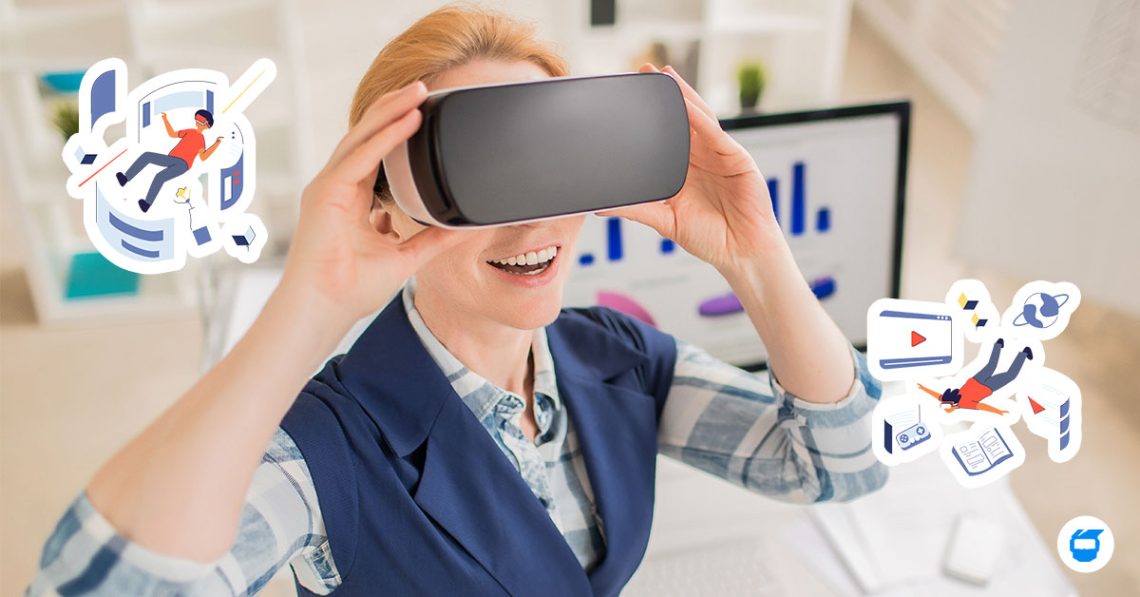Augmented Reality, or AR, has swiftly emerged as a transformative technology in recent years, reshaping various industries, including web design. So in this article, we’ll look into what AR is, its significance in the realm of web design, and how it’s impacting user experiences online.

Table of Contents
- What is Augmented Reality (AR)?
- How Does AR Work?
- The Impact of AR on Web Design
- Implementing AR in Web Design
- Future Trends in AR Web Design
What is Augmented Reality (AR)?
Augmented Reality blends digital elements with the real world, enhancing the perception of reality. Unlike Virtual Reality (VR), which immerses users entirely into a simulated environment, AR overlays digital content onto the physical world, typically viewed through a device like a smartphone or AR glasses.
How Does AR Work?
AR technology utilizes sensors, cameras, and algorithms to detect the user’s environment and superimpose digital content accordingly. This can include 3D models, text, images, or animations seamlessly integrated into the real-world environment.
The Impact of AR on Web Design
1. Enhancing User Engagement
AR brings interactivity to the forefront of web design, offering users immersive experiences that go beyond traditional browsing. By allowing users to interact with digital content overlaid onto their physical surroundings, AR captivates attention and encourages prolonged engagement.
2. Personalized Experiences
AR allows web designers to customize experiences for each user by using location information and user preferences. This customization helps create stronger bonds between users and brands, leading to higher customer satisfaction and loyalty.
3. Bridging the Gap Between Online and Offline Experiences
Thanks to AR, web design goes beyond the digital world, blending smoothly with the real world. This blending lets businesses craft consistent experiences that cover both online and offline platforms, building a unified brand experience for users.
Implementing AR in Web Design
1. Interactive Product Visualization
One of the most prominent applications of AR in web design is interactive product visualization. When it’s added to e-commerce websites, shoppers can see products in their own environment before buying. This immersive shopping experience lowers doubts and boosts confidence in making purchases.
Related: Ecommerce Website Design Trends in 2024: Creating Visually Stunning Online Stores
2. Augmented Reality Advertising
AR advertising campaigns use the interactive features of AR to make interesting and memorable experiences for users. Brands can make AR ads that let users play with products or see branded content in their surroundings. This boosts engagement and helps users remember the brand better.
3. Gamification
Integrating AR-based games into websites adds an element of fun and entertainment, encouraging users to spend more time engaging with the content. Gamification not only increases user engagement, but also helps in conveying brand messages in a memorable and enjoyable manner.
Future Trends in AR Web Design
1. Wearable AR Devices
As wearable AR devices become more widespread, web designers will need to adapt their strategies to accommodate these platforms. Designing AR experiences optimized for devices like AR glasses presents new opportunities and challenges, requiring consideration of factors such as display size and user interface design.
2. WebAR Technologies
Advancements in WebAR technologies are modifying access to AR experiences by eliminating the need for dedicated apps. WebAR allows users to access augmented reality content directly through a web browser, expanding the reach of AR applications and simplifying the user experience.
Augmented Reality is revolutionizing the landscape of web design, offering limitless possibilities for creating immersive and interactive experiences. By embracing AR technology, businesses can captivate audiences, personalize interactions, and bridge the gap between the online and offline worlds. As AR continues to evolve, its impact on web design will undoubtedly shape the future of digital experiences.
Looking for web design services for your business? Contact us today, and we’ll be glad to assist you!

